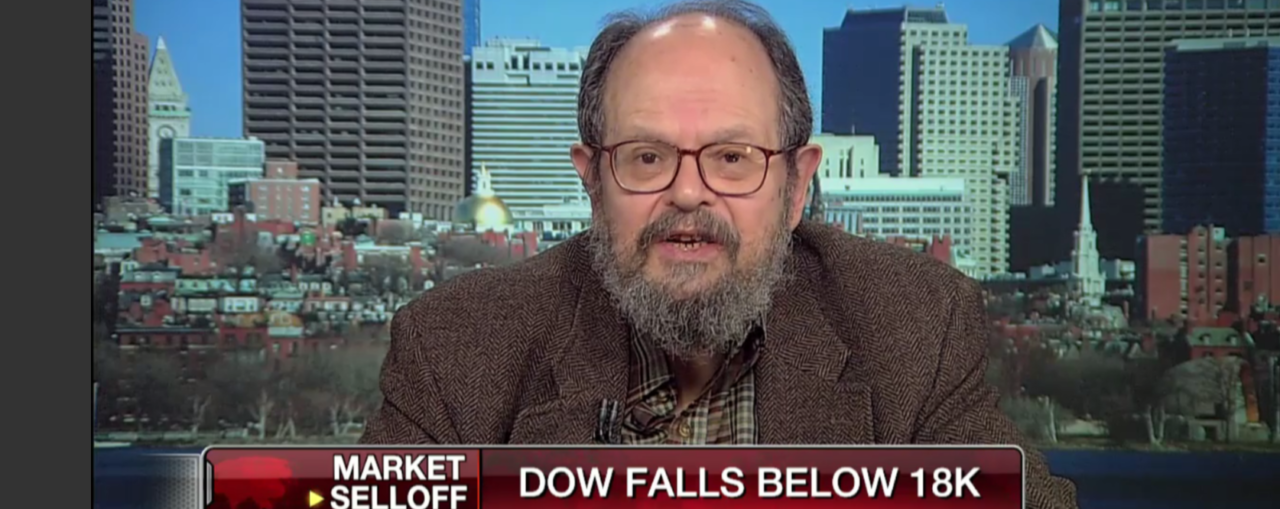Study: Earth is becoming GREENER, not BROWNER due to climate change
Guest essay by Dr. Patrick J. Michaels It’s hard to say how many punny posts we came up with using those words when Carol Browner was Bill Clinton’s EPA Administrator, but here we use it in the context of a recent Science paper by J-F.
Source: Study: Earth is becoming GREENER, not BROWNER due to climate change…
PLANET EARTH COVERED IN MUCH MORE FOREST THAN THOUGHT
Date: 11/05/17
…MIT Climate Scientist Dr. Richard Lindzen: Believing CO2 controls the climate ‘is pretty close to believing in magic’

Richard Lindzen is the Alfred P. Sloan Professor of Atmospheric Sciences, Emeritus at Massachusetts Institute of Technology.

MIT atmospheric science professor Richard Lindzen suggests that many claims regarding climate change are exaggerated and unnecessarily alarmist.
Introduction:
For over 30 years, I have been giving talks on the science of climate change. When, however, I speak to a non-expert audience, and attempt to explain such matters as climate sensitivity, the relation of global mean temperature anomaly to extreme weather, that warming has decreased profoundly for the past 18 years, etc., it is obvious that the audience’s eyes are glazing over. Although I have presented evidence as to why the issue is not a catastrophe and may likely be beneficial, the response is puzzlement. I am typically asked how this is possible. After all, 97% of scientists agree, several of the hottest years on record have occurred during the past 18 years, all sorts of extremes have become more common, polar bears are disappearing, as is arctic ice, etc. In brief, there is overwhelming evidence of warming, etc. I tended to be surprised that anyone could get away with such sophistry or even downright dishonesty, but it is, unfortunately, the case that this was not evident to many of my listeners. I will try in this brief article to explain why such claims are, in fact, evidence of the dishonesty of the alarmist position.
The 97% meme:
This claim is actually a come-down from the 1988 claim on the cover of Newsweek that all scientists agree. In either case, the claim is meant to satisfy the non-expert that he or she has no need to understand the science. Mere agreement with the 97% will indicate that one is a supporter of science and superior to anyone denying disaster. This actually satisfies a psychological need for many people. The claim is made by a number of individuals and there are a number of ways in which the claim is presented. A thorough debunking has been given in the Wall Street Journal by Bast and Spencer. One of the dodges is to poll scientists as to whether they agree that CO2 levels in the atmosphere have increased, that the Earth has been warming (albeit only a little) and that man has played some part. This is, indeed, something almost all of us can agree on, but which has no …
New Climate Study Calls EPA’s Labeling Of CO2 A Pollutant ‘Totally False’
A new study published by seasoned researchers takes aim at the heart of the Environmental Protection Agency’s (EPA) authority to issue regulations to curb carbon dioxide emissions.
The study claims to have “proven that it is all but certain that EPA’s basic claim that CO2 is a pollutant is totally false,” according to a press statement put out by Drs. Jim Wallace, John Christy and Joe D’Aleo.
Wallace, Christy and D’Aleo — a statistician, a climatologist and meteorologist, respectively — released a study claiming to invalidate EPA’s 2009 endangerment finding, which allowed the agency to regulate CO2 as a pollutant.
“This research failed to find that the steadily rising atmospheric CO2 concentrations have had a statistically significant impact on any of the 14 temperature data sets that were analyzed,” the authors say in the release for the second edition of their peer-reviewed work.
“Moreover, these research results clearly demonstrate that once the solar, volcanic and oceanic activity, that is, natural factor, impacts on temperature data are accounted for, there is no ‘record setting’ warming to be concerned about,” the researchers say. “In fact, there is no natural factor adjusted warming at all.”
The study is intended to bolster a petition Wallace and D’Aleo filed with EPA as part of the Household Electricity Consumers Council (CHECC), asking the agency to reconsider its endangerment finding.
The libertarian Competitive Enterprise Institute (CEI) also filed a petition with EPA to reconsider the endangerment finding. The Trump administration has not indicated whether or not they will reconsider the Obama-era finding. Any challenge would be met with legal action from environmental activists.…
Research Report Disproves the Alarmists’ Basic Claims About CO2
This report and the earlier edition go far beyond this by disproving the alarmists’ basic claim that increases in atmospheric CO2 result in global warming. The Research Report results can be replicated using the basic data that the authors are willing to provide, most unlike the elaborate global climate models relied on by climate alarmists. Both the First and Second Editions have been extensively peer reviewed by experts in the relevant fields. So the reports have all the characteristics of good science, and should have the support of anyone who supports science, which the marchers claim to represent.
Climate skeptics have long argued that fluctuations in global temperatures are not primarily due to human-caused emissions of CO2 from using fossil fuels to improve their lives, and have generally attributed these fluctuations to changes in the sun, our source of heat and light. The importance of solar variations and other natural fluctuations has now been shown to be the case despite many tens of billions of taxpayer dollars spent by the US and other governments to try to disprove the obvious and mislead the public on this central scientific issue in the climate debate.…
Nation Mag: CO2 called the ‘other poison gas killing Syrians’ – Declares CO2 ‘a far more deadly gas’ than nerve agent Sarin gas
…Full The Nation article here:
he gas attack in Syria on April 4 consumed the world’s attention and galvanized the Trump White House, leading to the launch of 59 cruise missiles on a small airport from which the regime of Bashar al-Assad has been bombing the fundamentalist rebels in Idlib province. The pictures of suffering children, Trump said, had touched him. Yet the president and most of his party are committed to increasing the daily release of hundreds of thousands of tons of a far more deadly gas—carbon dioxide. Climate scientist James Hansen has described our current emissions as like setting off 400,000 Hiroshima atomic bombs each day, every day of the year.
The Syrian civil war has left more than 400,000 people dead, among them graveyards full of children and innocent noncombatants. About half the country’s 23 million people have been left homeless, and of those, 4 million have been driven abroad (some of them contributing to Europe’s refugee crisis and its consequent rightward political shift). The war occurred for many complex reasons, including social and political ones. The severest drought in recorded modern Syrian history in 2007–10, however, made its contribution.
The mega-drought drove 1.5 million farmers and farmworkers off the land to the seedy bidonvilles ringing cities such as Homs and Hama. In the northeast, 70 percent of the farm livestock died in those years. These displaced and dispossessed day laborers, who seldom found remunerative new work in Syria’s stagnant urban economy, joined in the demonstrations against the regime. Some were later drawn into the civil war as militiamen. Others in the end fled their country.
Of course, Syria has had milder periodic droughts all through history. Moreover, some countries in the region, such as Israel, have been much better at water management than the decrepit Baath state in Syria. It matters how such crises are handled. A team of scientists writing in the Proceedings of the National Academy of Sciences last year, however, found no natural explanation for how rapidly Syria has been drying out over the past century or for the withering severity of the latest drought. Human-caused climate change, which has raised the temperature of the planet
L A Times article deceptively hides 750 million metric tons of U.S. Greenhouse Gas emission reductions
Guest essay by Larry Hamlin An April 16, 2017 L A Times article entitled “Climate goal in peril” presents a graph which portrays US greenhouse gas emission reductions as falling short of Obama’s voluntary and unenforceable 2015 Paris agreement pledge.
Watch: Tony Heller of Real Climate Science: Is Carbon Dioxide A Pollutant?
…‘Climate change’ causes quietest cyclone season in Southern Hemisphere
Spot the effect of man-made CO2 in this graph. Terror, terror I tell you — as the accumulated energy of cyclones in the southern half of the planet reaches a new low, far below anything seen in records that go back to 1971. From the Daily Caller, and @Ryan Maue Meteorologist Ryan Maue of Weatherbell Analytics noted tropical cyclone activity in the Southern Hemisphere for the 2016-2017 season is the “quietest on record, by far” based on records going back nearly five decades.
Source: Climate change causes quietest cyclone season in Southern Hemisphere…
Trump eyes climate skeptic for key White House environmental post
President Donald Trump may tap a vocal critic of climate change science to serve as the highest-ranking environmental official in the White House.
Kathleen Hartnett White, who says carbon emissions are harmless and should not be regulated, is a top contender to run the Council on Environmental Quality, the White House’s in-house environmental policy shop, sources close to the administration told POLITICO.
White House officials brought White in for an interview late last month, according to a person familiar with the hiring process, and Trump met with White at Trump Tower in November when she was under consideration to lead the Environmetal Protection Agency.
In an interview with POLITICO in September, White proposed establishing a “blue ribbon commission” to relitigate climate science, underscoring her unorthodox belief that the science showing human-induced climate change is unsettled.
The commission, she said, would develop an “alternative scientific methodology” to the IPCC, whose usefulness she said has “reached its peak.”
If nominated, White would likely be an advocate within the administration of reopening the foundation of Obama’s climate change agenda: EPA’s 2009 “endangerment finding,” a scientific conclusion that greenhouse gases constitute a threat to public health or welfare.
Trump told an industry-backed think tank last year that he will “review” the endangerment finding, a potentially difficult task given the scientific consensus on the issue. Any withdrawal of the finding would be challenged by environmentalists in court.
…



